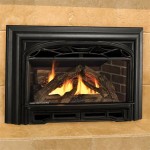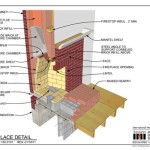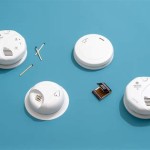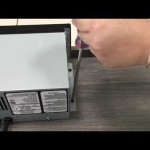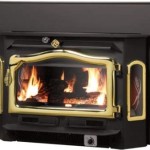Prefab Wood Burning Fireplaces: A Comprehensive Overview
Prefabricated, or "prefab," wood-burning fireplaces offer a streamlined and often more cost-effective alternative to traditional masonry fireplaces. They are designed and manufactured in a factory setting, adhering to strict quality control standards, and then transported to the installation site as a pre-built unit. This approach contrasts significantly with masonry fireplaces, which are constructed piece-by-piece on-site using bricks, stones, and mortar. This article provides a comprehensive overview of prefab wood-burning fireplaces, encompassing their construction, advantages, disadvantages, installation considerations, and maintenance requirements.
A prefab wood-burning fireplace typically consists of a firebox, a chimney system, and various optional components such as blowers, decorative fronts, and surrounds. The firebox is usually constructed from heavy-gauge steel or cast iron and lined with refractory materials like firebrick or ceramic panels to withstand the intense heat generated during combustion. The chimney system, often double-walled or triple-walled stainless steel, is designed to safely vent exhaust gases away from the home. The entire system is engineered as a complete unit, ensuring optimal performance and safety when installed correctly.
Key Point 1: Advantages of Prefab Wood Burning Fireplaces
Prefab wood-burning fireplaces offer a compelling array of advantages when compared to their masonry counterparts. These advantages often make them a more attractive option for homeowners seeking the warmth and ambiance of a wood-burning fireplace without the complexities and expenses associated with traditional masonry construction.
One of the most significant advantages is cost-effectiveness. The factory production process of prefab fireplaces allows for economies of scale, resulting in lower material and labor costs. The simplified installation process, which typically requires less time and specialized labor compared to masonry construction, further contributes to the overall cost savings. The predictable cost associated with a prefab unit is another advantage, as unforeseen complications during masonry construction can often lead to budget overruns.
Installation time is significantly reduced with prefab fireplaces. Unlike masonry fireplaces, which can take weeks to construct, a prefab fireplace can often be installed in a matter of days. This faster installation time minimizes disruption to the home environment and allows homeowners to enjoy their new fireplace sooner. The modular design of prefab fireplaces also simplifies installation, reducing the potential for errors and ensuring a consistent and reliable outcome.
Prefab fireplaces are engineered for consistent performance and safety. They are designed and tested to meet stringent safety standards, ensuring efficient combustion and proper venting of exhaust gases. The controlled manufacturing environment allows for precise construction and adherence to specifications, minimizing the risk of defects and malfunctions. The use of high-quality materials, such as heavy-gauge steel and refractory linings, further enhances the durability and safety of the fireplace.
Prefab fireplaces offer greater design flexibility compared to traditional masonry options. They are available in a wide range of styles, sizes, and finishes, allowing homeowners to choose a fireplace that complements their home decor. Options include traditional, contemporary, and modern designs, with various decorative fronts, surrounds, and accessories available to customize the appearance. The modular design also allows for flexible installation options, enabling the fireplace to be placed in various locations within the home, even in areas where a traditional masonry fireplace would be impractical.
Many prefab fireplaces are designed with improved energy efficiency in mind. Features such as airtight doors and insulated fireboxes help to maximize heat output and minimize heat loss. Some models also incorporate blowers that circulate warm air into the room, further enhancing energy efficiency and reducing heating costs. The controlled combustion process in prefab fireplaces also reduces the amount of smoke and emissions released into the atmosphere, making them a more environmentally friendly option compared to older, less efficient fireplaces.
Key Point 2: Disadvantages of Prefab Wood Burning Fireplaces
Despite the numerous advantages of prefab wood-burning fireplaces, certain drawbacks should be considered before making a purchase. These limitations are important to weigh against the benefits to determine if a prefab fireplace is the right choice for a particular homeowner and their specific needs.
The lifespan of a prefab fireplace, while durable, is generally shorter than that of a well-maintained masonry fireplace. The steel or cast iron components, while resistant to high temperatures, can eventually corrode or degrade over time, particularly with frequent use. While replacement parts are typically available, the overall lifespan of the unit usually ranges from 15 to 25 years, compared to the potentially indefinite lifespan of a properly constructed masonry fireplace.
While offering design flexibility, prefab fireplaces may lack the unique aesthetic appeal of a custom-built masonry fireplace. The standardized designs and materials may not appeal to homeowners seeking a truly one-of-a-kind fireplace. The limited customization options, compared to the virtually limitless possibilities of masonry construction, can be a drawback for those with specific design requirements.
Repairing a prefab fireplace can sometimes be more complex and costly compared to repairing a masonry fireplace. The integrated design means that individual components are often not easily accessible for repair. Furthermore, specialized parts may be required, which can be more difficult and expensive to obtain. Replacing the entire firebox unit may be necessary in some cases, particularly if significant damage occurs.
The heat output of a prefab fireplace is generally consistent and efficient, but it may not be as high as that of a large, custom-built masonry fireplace. The size of the firebox and the design of the combustion chamber can limit the amount of wood that can be burned at one time, impacting the overall heat output. While many models offer supplemental heating features such as blowers, they may not be sufficient to heat larger areas or provide the same level of radiant heat as a larger masonry fireplace.
Some homeowners perceive prefab fireplaces as lacking the traditional charm and character of a masonry fireplace. The manufactured appearance may not appeal to those seeking the rustic aesthetic of brick or stone construction. The historical significance and craftsmanship associated with masonry fireplaces can be a significant factor for some buyers, and prefab fireplaces may not offer the same sense of heritage and tradition.
Key Point 3: Installation and Maintenance of Prefab Wood Burning Fireplaces
Proper installation and maintenance are crucial for ensuring the safe and efficient operation of a prefab wood-burning fireplace. Adhering to the manufacturer's instructions and following recommended maintenance procedures will maximize the lifespan of the fireplace and minimize the risk of potential hazards.
Professional installation is highly recommended for prefab fireplaces. While some homeowners may be tempted to attempt a DIY installation, it is essential to engage a qualified and certified installer to ensure that the fireplace is installed correctly and in compliance with local building codes. A professional installer will have the necessary expertise and experience to properly connect the chimney system, ensure adequate clearances from combustible materials, and test the fireplace for proper operation.
Regular chimney inspections and cleaning are essential for maintaining the safety and efficiency of a prefab fireplace. Creosote, a flammable byproduct of wood combustion, can accumulate in the chimney and pose a significant fire hazard. A qualified chimney sweep should inspect and clean the chimney at least once a year, or more frequently if the fireplace is used extensively. Regular cleaning removes creosote buildup and ensures that the chimney is properly vented.
Proper wood selection is crucial for efficient and safe operation. Only seasoned hardwood should be burned in a prefab fireplace. Seasoned wood has a lower moisture content, which results in cleaner and more efficient combustion. Burning unseasoned or wet wood can produce excessive smoke and creosote buildup, increasing the risk of chimney fires and reducing the efficiency of the fireplace. Softwoods, such as pine, should generally be avoided as they tend to burn quickly and produce more creosote.
Regularly inspect the firebox and chimney system for any signs of damage or deterioration. Cracks in the firebrick lining, signs of corrosion on the steel components, or leaks in the chimney system should be addressed promptly. Minor repairs can often be performed by the homeowner, but more significant damage should be addressed by a qualified technician. Addressing problems early can prevent them from escalating into more costly and dangerous repairs.
Follow the manufacturer's instructions for operating the fireplace, including recommended burn times and fuel loads. Overloading the firebox or burning the fireplace for extended periods can lead to overheating and damage to the fireplace components. Maintaining proper airflow and avoiding the use of accelerants, such as gasoline or kerosene, will ensure safe and efficient combustion.
Proper disposal of ashes is also an important safety consideration. Ashes should be allowed to cool completely before being removed from the fireplace. They should then be placed in a metal container with a tight-fitting lid and stored away from combustible materials. Hot embers can remain in ashes for several days, so it is essential to handle them with care and dispose of them properly to prevent fires.

New Wood Burning Prefab Fireplaces Complete Fireplace Installs

New Wood Burning Prefab Fireplaces Complete Fireplace Installs

All About Prefabricated Fireplaces Chimney Savers

Zero Clearance Vs Prefabricated Fireplace Full Service Chimney

We Install Napoleon Majestic Prefab Fireplaces Wood Fireplace

Wood Burning Fireplaces Zero Clearance Fireplace Install

Woodland Park Co Prefab Fireplace Wood Burning Installation

Superior Prefab Wrt Wct 2000 Series Indoor Fireplace Bollens Antique Hearth Llc

Superior Fireplaces 50 Inch Winston Luxury Series Wood Burning Fireplace Fine S Gas

Superior Prefab Wrt Wct 3000 Pro Series Indoor Fireplace Bollens Antique Hearth Llc
Related Posts

